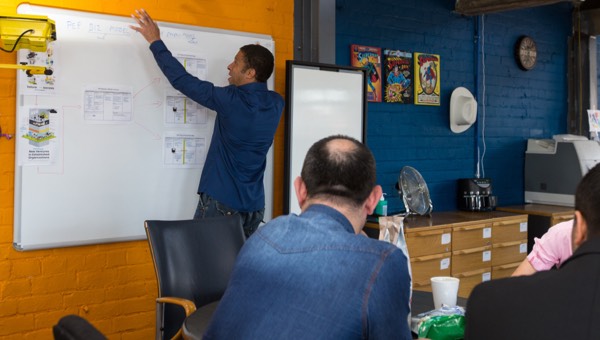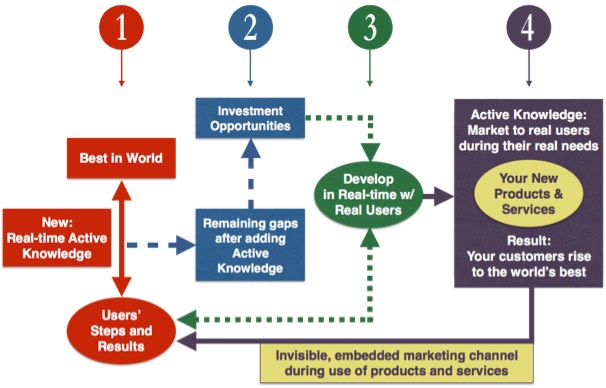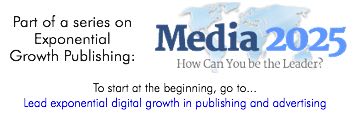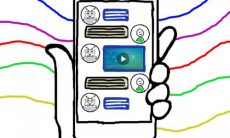Lesson for leaders
The challenges in the innovation process are to align it with corporate strategy, implement it, and evaluate how to improve it: on the competition side, pressure are fierce; on the creation side, there may be too many options; and on the resources side you are limited by time, personnel, skill, and budget.
Avoid innovation — or do it poorly — and your company will be killed by successful exponential growth competitors. To get ahead, you need to be fast and smart.
Accelerate faster than agile sprints

Fortunately, there are powerful and accurate processes you know and can use. If you have agile user-centered designers, you involve your customers, learn their problems, and design-test new ideas.
You can go faster when you rethink and reinvent what your products do, and how your business works. Here’s how to create, test, and advance critical designs and features quick:
- Design and test an innovation’s core T-structure within two weeks.
- The first week’s “horizontal top-line test” determines the users’ mental model for the innovation’s top functions — its high-level navigation.
- The second week’s “vertical drill-down test” determines the mental model for a core function, which will replicate with other features.
- In 2 weeks, deliver a user-tested and proven app design that’s user-centered, along with a first range of insights into real users’ expectations and mental models.
Apply this “super sprint” at any stage of an innovation to accelerate its team instantly:
- Create initial user-centered designs.
- Solve critical design problems.
- Answer functional questions.
- Re-align with users’ top needs and priorities.
The smartest paradigm: the “visible hand of the market”
 For the first time in economic history, it is possible to see and fix the economy’s gaps in real-time:
For the first time in economic history, it is possible to see and fix the economy’s gaps in real-time:
- The red identifies gaps with and without active knowledge. This shows what’s solved immediately, which solutions work, and the gaps that remain.
- The blue is a real-time view of the gaps, such as dashboards or ranked reports. The gaps are business opportunities. The market value of each gap is estimated, and used to rank each investment opportunity.
- The green is where each approved investment opportunity has been assigned to a development team. The team uses lean design-testing to develop designs, prototypes, and working systems.
- The purple turns these into products and services that are marketed using an active knowledge marketing channel that is embedded inside of tasks and steps as users do them.
When users adopt the new products and services, the results are immediately visible. It’s clear if the gaps have been solved and how much the users’ performance advanced. Any remaining gaps are used by the development team to improve these new products and services. From visible gaps to needed advances, businesses can now personally deliver solutions to each person at the moments and places where each is needed.
Make your company an exponential growth winner

Executives in leading companies face a wild, high-tech ride. Innovating is exciting and hard. It adds a lot though not always what is expected. The biggest challenge is producing enough with limited time, people, skills, and budget.
Exponential growth means producing more — a lot more — with less.
Disclaimer: All articles in Media 2025 are provided as-is for general information. Only the issued patent, such as U.S. Patent 9,183,560 “Reality Alternate,” and patent pending application and specification, describe patented and patent pending technology.
Related articles in Media 2025:
- First article — Executive Summary: Lead exponential digital growth through publishing and advertising
- Previous article: Intentional inventing: Own the intellectual property that leads the future
- This is the last article in the Media 2025 series.






